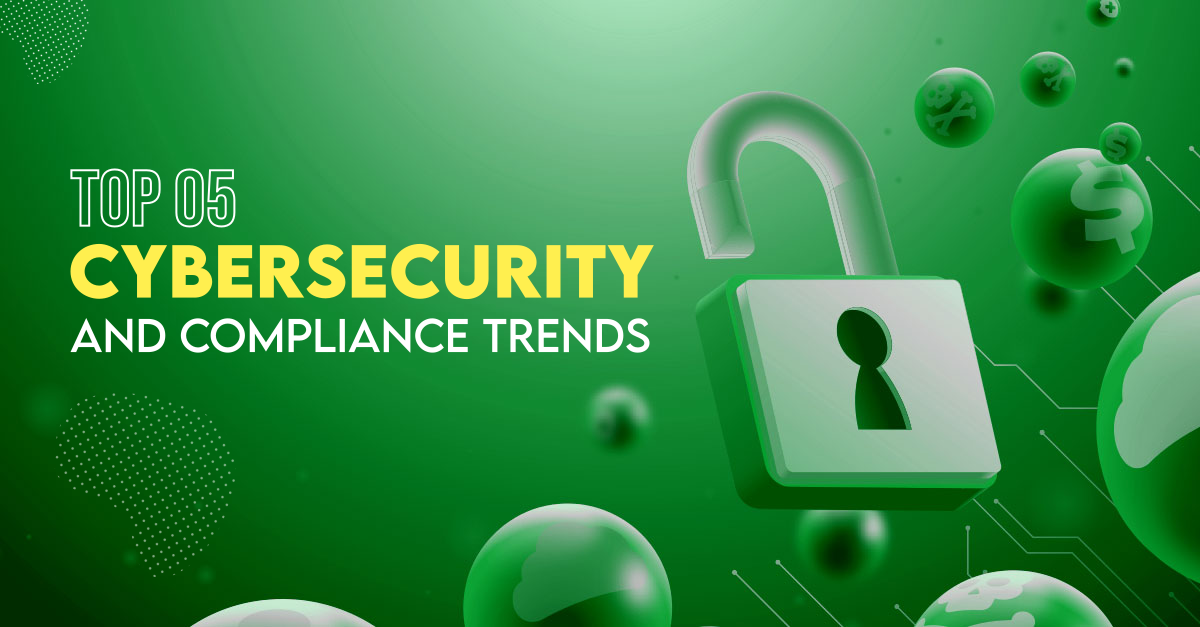The top 5 cybersecurity and compliance trends
Revamping supply chains was the biggest challenge for businesses during the pandemic with remote-hybrid working models becoming the norm. While they came up with greater digital transformation and tools to enhance productivity, they also faced new challenges for cybersecurity and compliance. While cultural and technological norms changed and business continuity measures were in place, it created an opportunity for more complex cybersecurity and compliance threats to develop. It was observed that attacks now often originate from seemingly trusted devices, people, and applications from within the network. Hackers are now not just smarter; they are vicious like never before. Cybersecurity is a priority Organizations across the globe have now started recognizing phishing and malware as a legitimate threat, and see a data breach as an inevitable event. Most businesses have increased spending on cybersecurity in 2022 as compared to 2020 and 2021 and made it their priority. By 2025, 60% of organizations will consider cybersecurity as the most crucial factor in carrying out transactions and interactions with others. Let’s take a look at the top 5 cybersecurity and compliance trends for 2022: Organizations across the board rushed to deploy their applications on the cloud which created a major issue for security teams. In this rush, there were issues with configurations and security lapses which led to data leakage as permissions were granted without distinction. In 2022, cyber risk teams will be focusing on cloud security and configurations. Cloud security was always a concern for businesses and now even major cloud service providers are not immune to attacks. Service providers need to focus on strengthening their architecture since they are likely to bear the brunt of increased attacks from hackers. The world is reeling from a severe shortage of cybersecurity talent with over 1.5 million unfilled vacancies in the US alone. Companies are struggling to keep track of threats, selecting from the available security tools or building their own. As a result, organizations are increasingly moving towards outsourcing cybersecurity to Managed Security Service Providers or MSSPs who are experts at providing cybersecurity and compliance tools and services for an appropriate fee. Multiple security frameworks are expected to become the norm and companies will be required to comply with not just core frameworks like SOC 2, PCI-DSS, HIPAA etc., but newer ones like GDPR, CCPA, etc. Newer frameworks will keep organizations on their toes such that they will be rushing to ensure compliance in a timely and efficient manner. As long as cybersecurity remains a threat, organizations must stay prepared to share their security measures and programs with stakeholders, customers, partners, government agencies, law enforcement, auditors, and other critical third parties. This will help in establishing that they have credible and defensible cybersecurity and compliance program that can be relied upon. As we have observed cyber security trends and the upcoming threats, there is a latent need for organizations to invest in awareness training efforts so that their employees are mindful of the red flags that their information may be vulnerable and how they can avoid cyber-attacks when they are targeted. Venture7 believes that collaboration is another important aspect that should be the norm in 2022 as all teams and verticals need to cooperate to build and manage cybersecurity and compliance programs and report issues when they emerge.
Top 5 trends
1. The rapid adoption of the cloud will also increase focus on configuration issues
2. Hackers will target cloud service providers
3. Rise of outsourcing in security
4 . Security frameworks
5. Sharing of measures taken for cybersecurity and compliance with multiple agencies
Conclusion









